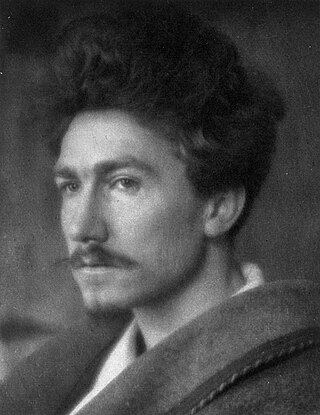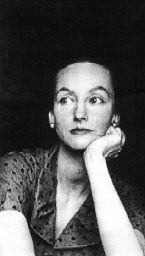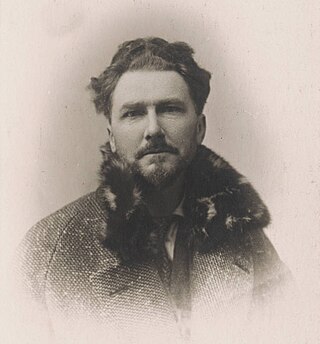
Ezra Weston Loomis Pound was an expatriate American poet and critic, a major figure in the early modernist poetry movement, and a fascist collaborator in Italy during World War II. His works include Ripostes (1912), Hugh Selwyn Mauberley (1920), and his 800-page epic poem, The Cantos (c. 1917–1962).

Richard Aldington, born Edward Godfree Aldington, was an English writer and poet, and an early associate of the Imagist movement. He was married to the poet Hilda Doolittle from 1911 to 1938. His 50-year writing career covered poetry, novels, criticism and biography. He edited The Egoist, a literary journal, and wrote for The Times Literary Supplement, Vogue, The Criterion and Poetry. His biography of Wellington (1946) won him the James Tait Black Memorial Prize. His contacts included writers T. S. Eliot, D. H. Lawrence, Ezra Pound, W. B. Yeats, Lawrence Durrell, C. P. Snow, and others. He championed Hilda Doolittle as the major poetic voice of the Imagist movement and helped her work gain international notice.

William Carlos Williams was an American poet, writer, and physician closely associated with modernism and imagism.

Imagism was a movement in early-20th-century Anglo-American poetry that favored precision of imagery and clear, sharp language. It is considered to be the first organized modernist literary movement in the English language. Imagism is sometimes viewed as "a succession of creative moments" rather than a continuous or sustained period of development. The French academic René Taupin remarked that "it is more accurate to consider Imagism not as a doctrine, nor even as a poetic school, but as the association of a few poets who were for a certain time in agreement on a small number of important principles".

Hilda Doolittle was an American modernist poet, novelist, and memoirist who wrote under the name H.D. throughout her life. Her career began in 1911 after she moved to London and co-founded the avant-garde Imagist group of poets with American expatriate poet and critic Ezra Pound. During this early period, her minimalist free verse poems depicting Classical motifs drew international attention. Eventually distancing herself from the Imagist movement, she experimented with a wider variety of forms, including fiction, memoir, and verse drama. Profoundly affected by her experiences in London during the Blitz, H.D.'s poetic style from World War II until her death pivoted towards complex long poems on esoteric and pacifist themes.

A Portrait of the Artist as a Young Man is the first novel of Irish writer James Joyce. A Künstlerroman written in a modernist style, it traces the religious and intellectual awakening of young Stephen Dedalus, Joyce's fictional alter ego, whose surname alludes to Daedalus, Greek mythology's consummate craftsman. Stephen questions and rebels against the Catholic and Irish conventions under which he has grown, culminating in his self-exile from Ireland to Europe. The work uses techniques that Joyce developed more fully in Ulysses (1922) and Finnegans Wake (1939).

Frederick Louis MacNeice was an Irish poet and playwright, and a member of the Auden Group, which also included W. H. Auden, Stephen Spender and Cecil Day-Lewis. MacNeice's body of work was widely appreciated by the public during his lifetime, due in part to his relaxed but socially and emotionally aware style. Never as overtly or simplistically political as some of his contemporaries, he expressed a humane opposition to totalitarianism as well as an acute awareness of his roots.
Christine Frances Evelyn Brooke-Rose was a British writer and literary critic, known principally for her experimental novels.

The Egoist was a London literary magazine published from 1914 to 1919, during which time it published important early modernist poetry and fiction. In its manifesto, it claimed to "recognise no taboos", and published a number of controversial works, such as parts of Ulysses. Today, it is considered "England's most important Modernist periodical."
Pamela Sydney Frankau was a popular English novelist from a prominent artistic and literary family. She was abandoned by her novelist father Gilbert Frankau at an early age, and she became a prolific writer. She stopped writing for a decade after the death of her lover, the poet Humbert Wolfe, in 1940. After serving in World War II, she was married for several years to an American naval officer, but returned to England and resumed her writing career.

Mary de Rachewiltz is an Italian-American poet and translator.

Jocelyne François is a French writer. She is the author of five lesbian novels, and winner of the Prix Femina.

Sheri Martinelli, was an American painter, poet, and muse.
Jerome Kavka was a supervising and training analyst at the Chicago Institute for Psychoanalysis. From the early 1990s until 2006, he also served as archivist for the Institute.
The Ballad of the Goodly Fere is a poem by Ezra Pound, first published in 1909. The narrator is Simon Zelotes, speaking after the Crucifixion about his memories of Jesus.

Olivia Shakespear was a British novelist, playwright, and patron of the arts. She wrote six books that are described as "marriage problem" novels. Her works sold poorly, sometimes only a few hundred copies. Her last novel, Uncle Hilary, is considered her magnum opus. She wrote two plays in collaboration with Florence Farr.

A Lume Spento is a 1908 poetry collection by Ezra Pound. Self-published in Venice, it was his first collection.

Cathay (1915) is a collection of classical Chinese poetry translated into English by modernist poet Ezra Pound based on Ernest Fenollosa's notes that came into Pound's possession in 1913. At first Pound used the notes to translate Noh plays and then to translate Chinese poetry to English, despite a complete lack of knowledge of the Chinese language. The volume's 15 poems are seen less as strict translations and more as new pieces in their own right; and, in his bold translations of works from a language he was unfamiliar with, Pound set the stage for modernist translations.

Jefferson and/or Mussolini: L'Idea Statale Fascism as I Have Seen It is a book by the American ex-patriate poet and fascist collaborator Ezra Pound. It was first published in 1935 by Stanley Nott Ltd in London.

Guide to Kulchur is a non-fiction book by the American poet Ezra Pound. Published in London in July 1938 by Faber & Faber, the book examines 2,500 years of cultural history, beginning with the Analects of Confucius. The first chapter was published in Milan in June 1937 as a pamphlet, Confucius/Digest of the Analects, by Giovanni Scheiwiller.














